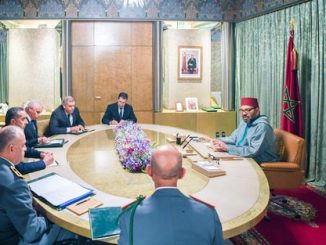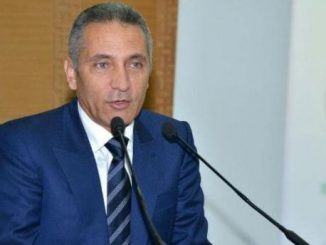
The framework agreement of the National Drinking Water Supply and Irrigation Program 2020-2027, signed on Monday at the Royal Palace in Rabat, during a ceremony presided over by His Majesty King Mohammed VI, defines the terms and conditions for the implementation and financing of this program which mobilizes investments of about 115.4 billion Dirhams. The measures provided for this program, based on the consolidation and diversification of sources of drinking water supply, will make it possible to meet demand for this vital resource, guarantee water security and combat the effects of climate change.
The programme is based on five priorities, namely the improvement of water supply, in particular through the construction of dams, the management of demand and the use of water, particularly in the agricultural sector, the strengthening of drinking water supplies in rural areas, the reuse of treated waste water in the irrigation of green areas and communication and awareness-raising with a view to raising awareness of the importance of preserving water resources and rationalizing their use.
These measures also concern the improvement of the overall storage capacity of some of these dams, the establishment of sea water desalination plants, the encouragement of the reuse of treated wastewater and the strengthening of the efficiency and distribution of drinking water. They also deal with the management of the demand for water resources and their development through the increase in the efficiency of drinking water production and distribution networks, the rationalization and development of water for irrigation, the continuation of work aimed at generalizing access to drinking water for the rural world, in addition to the organization of awareness campaigns in partnership with non-governmental organizations and other actors sensitive to the subject of water, all with a view to making all users aware of the responsible use of this resource.
The first axis will make it possible to develop the water supply of the usual resources through the completion of the large dams programmed in all the hydraulic basins of the Kingdom, a program related to the installation of small dams and hill dams and the implementation of sea water desalination projects in some cities (Casablanca, Safi, Dakhla). This axis also concerns the implementation of procedures and projects accompanying the supply of drinking water.
The second priority involves procedures and measures to continue the efforts made in the field of demand management and water use in the agricultural sector and the development of irrigation and drinking water systems by optimizing production equipment and improving the efficiency of distribution networks.
The third axis, corresponding to the strengthening of the supply of drinking water in rural areas, aims at generalizing the supply of drinking water in rural areas and putting an end to the precariousness that marks certain areas, essentially during periods of drought, by speeding up the implementation of the programs decided by the various stakeholders, headed by the National Office of Electricity and Drinking Water, and the other program, including the one aimed at reducing sectoral and social disparities. All of this will be achieved by adopting a supplementary program for areas not included in any of the program mentioned.
The fourth axis, relating to the reuse of treated waste water in the irrigation of green spaces, encourages, for its part, the reuse of treated waste water through a liquid sanitation program, and through a merger between the different sectors involved, as well as the signing of several partnerships, not forgetting important projects relating to the watering of golf fields.
With regard to the fifth and last axis, which deals with communication and awareness-raising with a view to increase awareness of the importance of preserving water resources and rationalizing their use, the program sets itself the objective of improving the degree of coordination between all the players involved, while at the same time making users and citizens aware of the rational use of water resources, with the involvement of civil society, with a view to anchoring, among the younger generations in particular, the importance of preserving these resources, by using direct and indirect channels of communication, organizing awareness-raising campaigns and parallel school activities and encouraging a spirit of initiative.




Be the first to comment